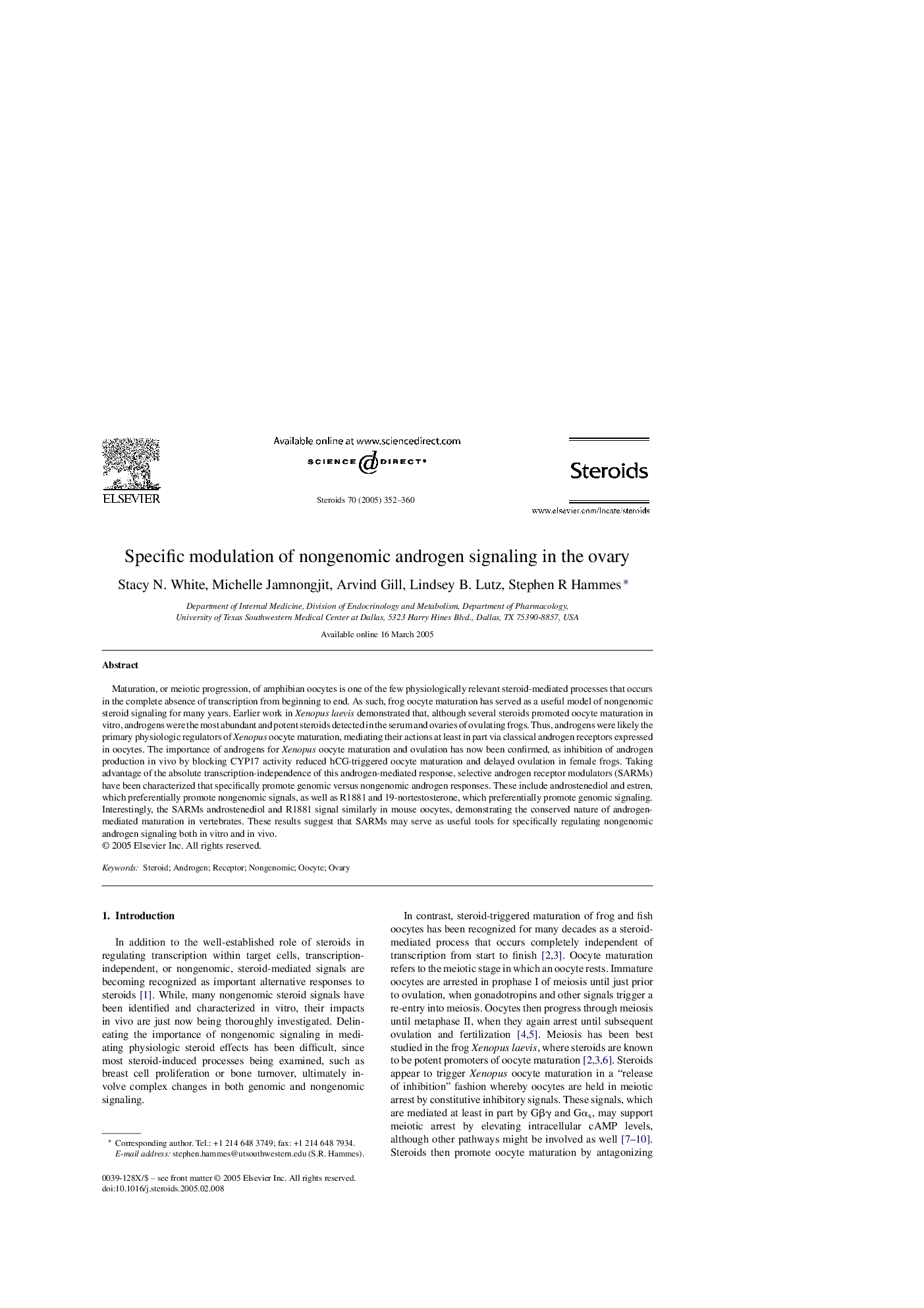| Article ID | Journal | Published Year | Pages | File Type |
|---|---|---|---|---|
| 9895201 | Steroids | 2005 | 9 Pages |
Abstract
Maturation, or meiotic progression, of amphibian oocytes is one of the few physiologically relevant steroid-mediated processes that occurs in the complete absence of transcription from beginning to end. As such, frog oocyte maturation has served as a useful model of nongenomic steroid signaling for many years. Earlier work in Xenopus laevis demonstrated that, although several steroids promoted oocyte maturation in vitro, androgens were the most abundant and potent steroids detected in the serum and ovaries of ovulating frogs. Thus, androgens were likely the primary physiologic regulators of Xenopus oocyte maturation, mediating their actions at least in part via classical androgen receptors expressed in oocytes. The importance of androgens for Xenopus oocyte maturation and ovulation has now been confirmed, as inhibition of androgen production in vivo by blocking CYP17 activity reduced hCG-triggered oocyte maturation and delayed ovulation in female frogs. Taking advantage of the absolute transcription-independence of this androgen-mediated response, selective androgen receptor modulators (SARMs) have been characterized that specifically promote genomic versus nongenomic androgen responses. These include androstenediol and estren, which preferentially promote nongenomic signals, as well as R1881 and 19-nortestosterone, which preferentially promote genomic signaling. Interestingly, the SARMs androstenediol and R1881 signal similarly in mouse oocytes, demonstrating the conserved nature of androgen-mediated maturation in vertebrates. These results suggest that SARMs may serve as useful tools for specifically regulating nongenomic androgen signaling both in vitro and in vivo.
Related Topics
Life Sciences
Biochemistry, Genetics and Molecular Biology
Biochemistry
Authors
Stacy N. White, Michelle Jamnongjit, Arvind Gill, Lindsey B. Lutz, Stephen R Hammes,
